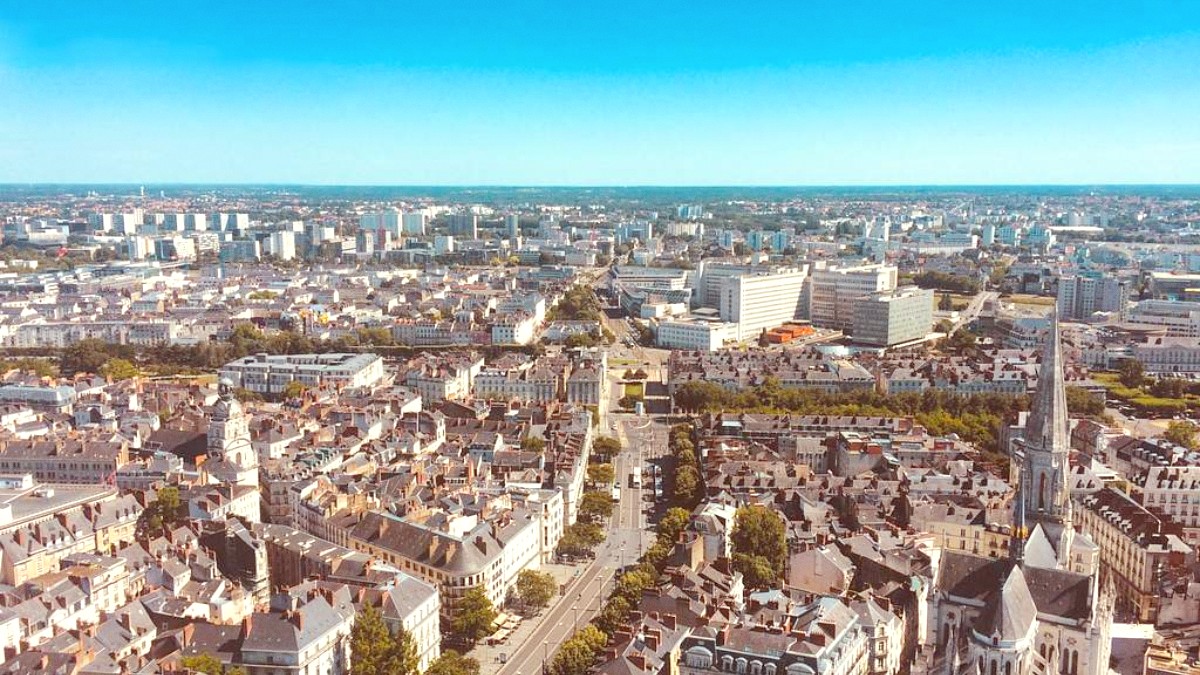
Southwestern France, France
Nantes cuisine mirrors its unique geographical position and history. As a major port on the Loire River and near the Atlantic coast, seafood and river fish appear often. Its historical ties to Brittany mean you find elements like butter, crêpes, and galettes. The Loire Valley influence brings fresh produce and wines. The city's past as a trading hub also introduced exotic spices.
Nantes is a city proud of its culinary heritage while embracing modern culinary trends.
Butter and Crème Fraîche contribute richness to many dishes.
Expect fresh mussels, oysters, cod, pike, and perch. Tender mâche (lamb's lettuce) and carrots are well-known local produce.
The pungent Curé Nantais cheese and the sweet Gâteau Nantais cake are regional delights.
A soft, square, pungent cow's milk cheese, often washed with Muscadet wine. Enjoy with local Muscadet.
Find it at Marché de Talensac or from local cheesemongers (fromageries).
Nantes' signature cake. Rich, buttery almond cake with rum and lemon zest, topped with a white rum glaze. Moist and flavorful.
Found in almost any traditional bakery (boulangerie) across the city.
Small, hard, translucent candies with a pyramid shape. Traditionally fruit-flavored.
Look for them in confectioneries or specialty food shops.
Classic French pastries, perfect for breakfast or a snack. Enjoy fresh from a local boulangerie.
Delicate almond meringue cookies with a creamy filling.
Nantes presents a diverse range of dining experiences for any budget or occasion.
Michelin-starred or Bib Gourmand restaurants provide sophisticated French cuisine with innovative twists.
The city has many excellent brasseries, bistros, and traditional restaurants serving regional and classic French dishes.
Boulangeries offer affordable sandwiches and pastries. Crêperies serve inexpensive and satisfying savory galettes and sweet crêpes.
Nantes' main covered market (open Tuesday-Sunday mornings). A food lover's paradise for fresh produce, local cheeses, seafood, charcuterie, and prepared foods.
Perfect for assembling a picnic or a casual lunch.
A beautifully renovated historic market hall transformed into a modern food court. Various food vendors offer different cuisines with communal seating.
Great for casual meals with friends, allowing everyone to choose their preference.
Many options available.
Japanese, Chinese, Vietnamese restaurants.
Specialized restaurants found in the city.
North African and other international choices.
Many traditional French dishes use wheat flour. Cross-contamination can be a concern in kitchens not specifically catering to gluten-free diets.
Carry a small translation guide with phrases about your allergies.
Halal options are available in some areas, mainly at ethnic restaurants (e.g., North African, Middle Eastern).
Kosher options are more limited, typically at specialized groceries or community centers.
If you have severe restrictions, consider booking accommodation with a kitchen and sourcing food from supermarkets or markets.
When at Marché de Talensac, sample bites from vendors.
Some private chefs or culinary schools in Nantes conduct cooking classes focusing on French or regional cuisine.
Guided walking food tours are popular. These tours visit various eateries, bakeries, and markets.
Take a day trip to the Muscadet wine region just outside Nantes. Many wineries have cellar tours and tastings.
Keep your hands visible on the table, not in your lap, while dining. This is a French custom.
Dining is a social event; expect a relaxed pace.
Breakfast (Petit Déjeuner): 7:00 AM - 9:00 AM, typically light. Lunch (Déjeuner): 12:00 PM - 2:00 PM, often main meal.
Dinner (Dîner): 7:00 PM onwards, can be multi-course.
The surrounding Pays Nantais region is rich in agriculture. While direct farm visits for tourists might be less common, you can visit local wineries.
Purchase directly from producers at Marché de Talensac or visit vineyards for tastings.
Local markets feature seasonal produce. During winter, look for warming dishes like stews.
Always communicate any dietary restrictions clearly to restaurant staff.